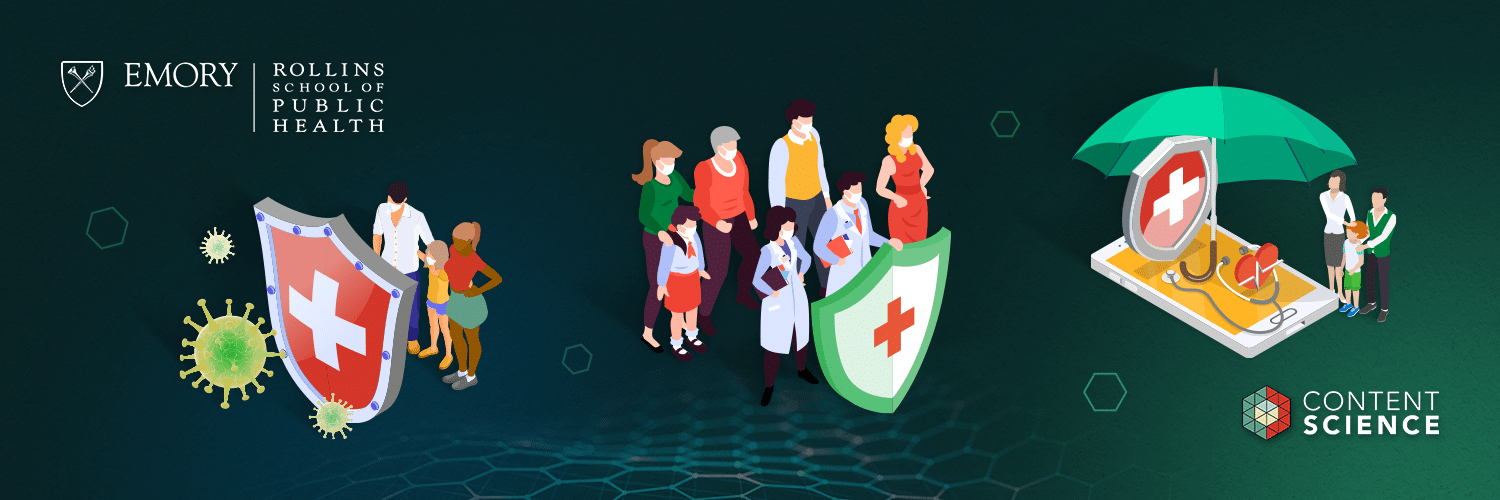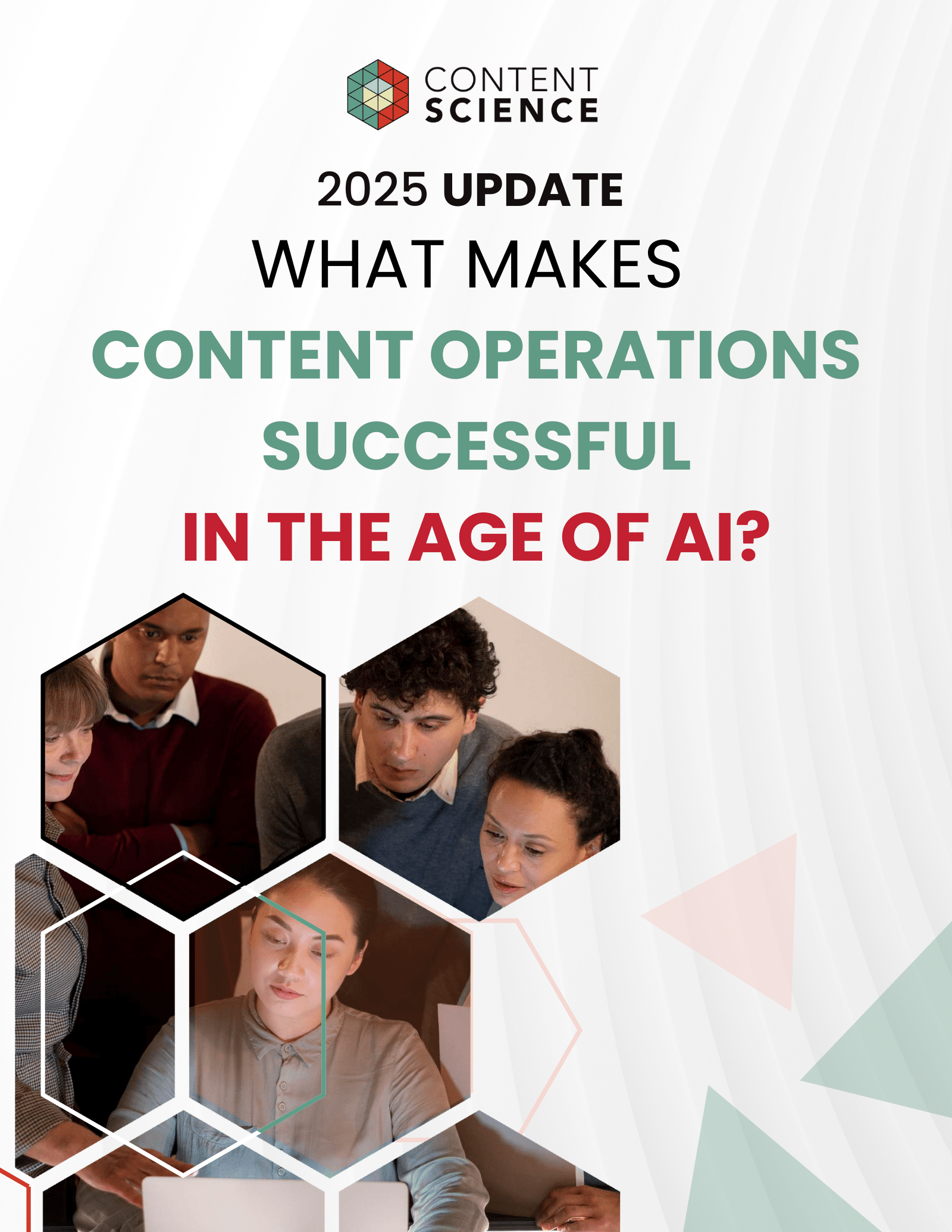
In 2023, I was hired into a newly created role of associate dean for communications at the number three school of public health in the United States—the Rollins School of Public Health at Emory University. At the time, Rollins did not have an official communications and marketing department, team, or guiding content strategy.
The school had a new dean who understood the value and importance of investing in communications and marketing. With her support, we set out to build a high-performance communications and marketing team and department from the ground up.
Here’s how we did it in less than a year.
Breaking Through
We assessed the landscape. Every top 10 school of public health has multiple communication products, with the top schools producing multiple podcasts, newsletters, magazine issues, multimedia offerings, social content, and more. So we knew we needed to produce high-quality, unique content to compete and stand out.
We also knew, as all of us in the content space do, that the digital content landscape is constantly evolving. At the time, Twitter had just become X and Threads had launched with fanfare and then fizzled out. We determined we had to be thoughtful about where we invest our resources, especially as a new team with a limited budget.
We prioritized data and analysis. Communications and marketing professionals need to use data to understand and target audiences. For example, we know that email newsletters are far less popular with Gen Z, but great for other generations. And, Gen X prefers podcasts more than others. But today, targeting in marketing goes far beyond generalities such as age and into specific behaviors such as the websites and platforms you last visited, the accounts you follow on social media, and the most recent items you’ve purchased. We analyzed and prioritized audience and behavior data in our communications and marketing moving forward.
Bridging the Gaps
We dove deep into our audience data and determined we have to bridge three big gaps:
- Our audience at the time was too limited. It was made up mostly of individuals with a close affiliation with the school. Our goal was to broaden and reach other key audiences—the media, researchers, policymakers, thought leaders, public health professionals, etc.—who are interested in public health information.
- We weren’t making our brand difference clear. Although we internally agreed on what makes Rollins unique, we were not clearly reflecting this externally.
- There was a lack of standard content operations. A lack of scalable structured systems—standard operating procedures—around communications and marketing was causing confusion, frustration, and inefficiencies.
Building the Future
To bridge these gaps and build our future state we developed a clear vision:
Rollins communications and marketing initiatives will illuminate today’s most pressing public health obstacles and opportunities through content and campaigns that highlight the breadth and depth of our work and offerings.
This vision laddered up to our goals:
- Promote trust in public health information
- Expand the reach and impact of our research and expertise
- Enhance student engagement with key services
- Increase applications/enrollment, especially for our new all online and DrPH prorgrams
- Broaden donor base
- Engage more research partners and funders
We created a comprehensive communications and marketing roadmap to help us hit these goals, which included:
- Implementing a multichannel public health editorial content strategy.
- Developing systems and guidelines for producing, publishing, promoting, and measuring communications.
- Launching a Rollins science communication initiative.
- Creating a robust Rollins brand + enrollment campaign.
- Redesigning (and replatforming) the Rollins website.
- Hire for key new roles.
Success
Within year one, we were able to achieve all of the goals we set out because of two critical reasons:
- Our communications and marketing team members are all stars. Each person is in the right-fit role and thriving. There is no success without the right people.
- Our dean believed in our team and invested in us. Leadership support is essential.
In one year, we were able to:
- Implement a winning multichannel public health communications strategy—increasing our online news readership by 100%, doubling media reach, gaining 20K+ followers on our new Instagram, and launching a new weekly radio/podcast show with Atlanta’s NPR-affiliate WABE.
- Create a new comprehensive brand positioning strategy, platform, and campaign—leading to more than 4 millions advertising impressions and a 500% increase in click-through rates in our admitted student yield email campaign.
- Develop systems and guidelines for producing, publishing, promoting, and measuring communications for 600+ faculty and staff.
Events, Resources, + More
New Data: Content Ops + AI
Get the latest report from the world's largest study of content operations. Benchmarks, success factors, commentary, + more!
The Ultimate Guide to End-to-End Content
Discover why + how an end-to-end approach is critical in the age of AI with this comprehensive white paper.
The Content Advantage Book
The much-anticipated third edition of the highly rated book by Colleen Jones is available at book retailers worldwide. Learn more!
20 Signs of a Content Problem in a High-Stakes Initiative
Use this white paper to diagnose the problem so you can achieve the right solution faster.






Comments
We invite you to share your perspective in a constructive way. To comment, please sign in or register. Our moderating team will review all comments and may edit them for clarity. Our team also may delete comments that are off-topic or disrespectful. All postings become the property of
Content Science Review.